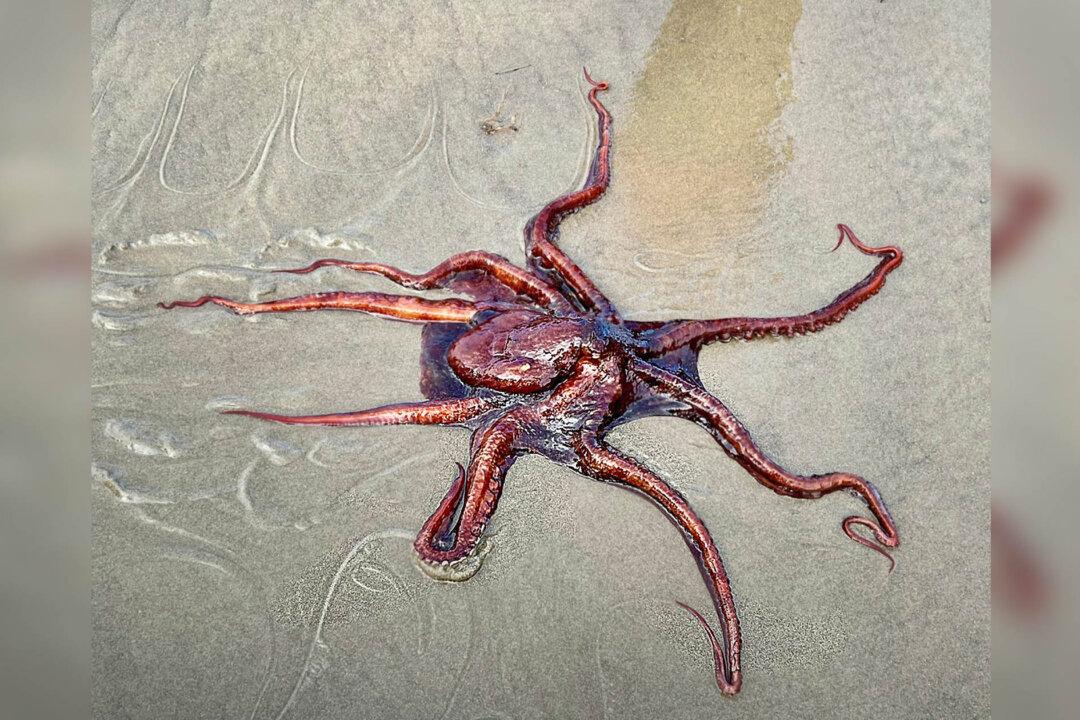They spotted the beached giant octopus between two rock formations along the Oregon Coast on June 7.
Floundering in the receding tide, the rust-red cephalopod lay with legs splayed out helplessly in the sand between Haystack Rock and the Needles—another famous coastal formation.






